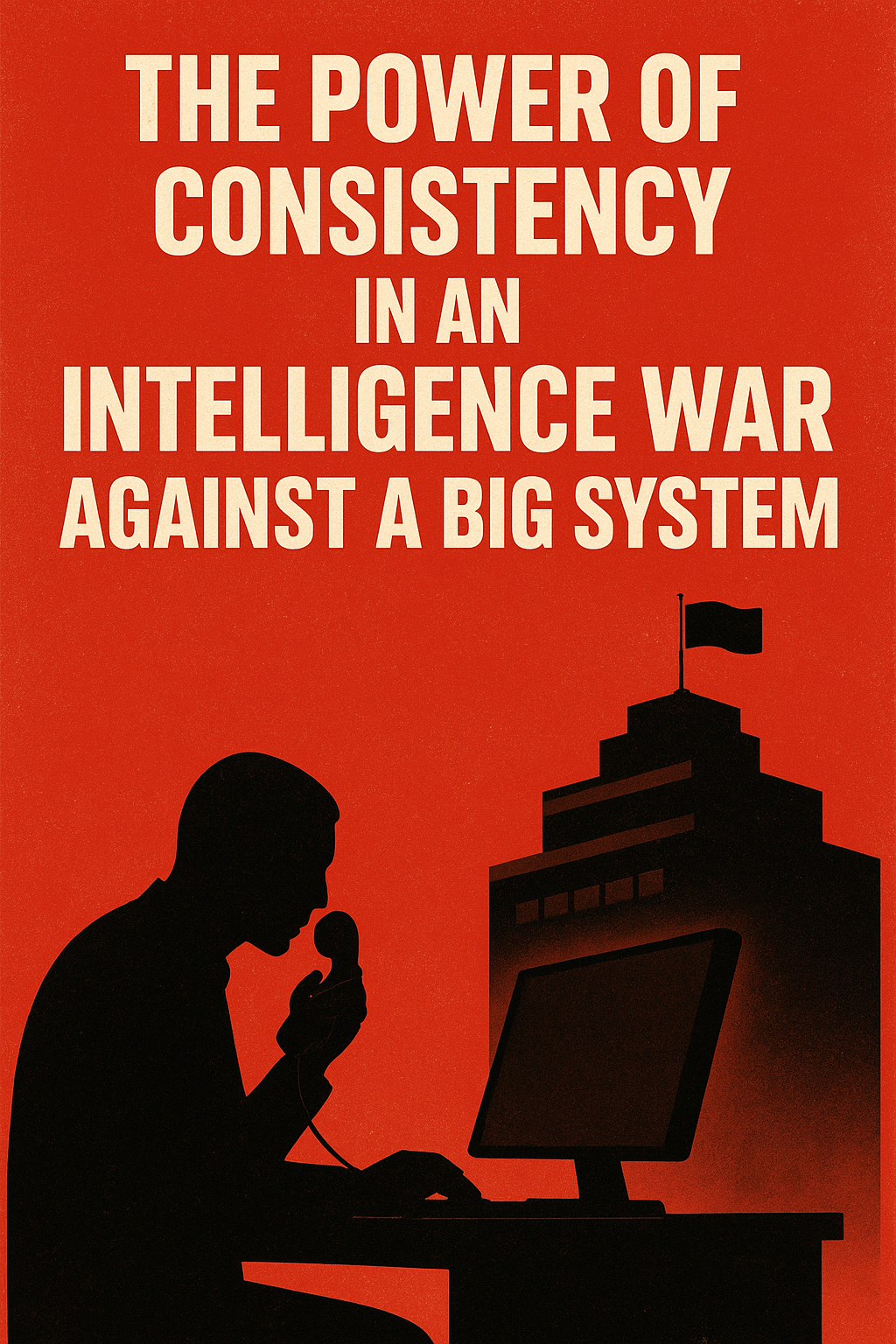
In the silent chessboard of intelligence wars, brute force rarely wins. Systems—especially large, entrenched ones—are built on layers of bureaucracy, security protocols, and cultural inertia. They are difficult to shake. Yet history shows that consistency—not noise, not speed—is what chips away at their armor.
When confronting a powerful system, information is both the weapon and the battleground. Big systems thrive on time, resources, and scale. They can absorb sporadic shocks, adapt to momentary disruptions, and outlast flashy attacks. But they struggle against something they cannot easily predict or exhaust: steady, disciplined pressure.
Consistency in intelligence work means patience, precision, and an unwavering commitment to objectives. It is the methodical gathering of data, the small but repeated exposures of weakness, and the quiet but relentless building of alliances. It’s not about spectacular leaks or sudden strikes; it’s about never letting the system breathe freely. Each consistent action—however small—becomes part of a cumulative strategy that erodes confidence and predictability in the larger opponent.
This is why the most effective intelligence campaigns often appear unspectacular. The daily discipline of collection, analysis, and quiet action shapes outcomes far more than one-time gambles. Consistency builds trust inside teams, reduces errors, and turns intelligence from a gamble into a science.
Large systems are designed to fight off chaos, but not monotony. They can suppress a revolt; they cannot easily suppress a constant whisper. In the long run, that whisper becomes the narrative, the data, the proof—and finally the change.
In any intelligence war against a big system, consistency is not just a tactic. It is the strategy. It turns time into an ally, and turns the weight of the system against itself.